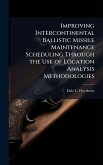Major Snodgrass reviews the performance of US offensive and defensive systems against Iraq's Scuds during Operation Desert Storm in 1991 and examines current US efforts to defeat these potentially destabilizing weapons. The danger of third world countries employing theater ballistic missiles has increased. Reflecting the realities of the new world order, theater missile defense is the first priority, and national missile defense is the second priority. Major Snodgrass covers the pros and cons of competing concepts to accomplish missile defense and evaluates the most promising technical solutions to the mobile ballistic-missile threat. This paper addresses how best to accomplish attack operations against the mobile ballistic missiles before they are launched. Using five basic criteria in his evaluation, he concludes that a multilayered approach, consisting of attack operations, active defense, passive defense, and a robust C4I network, forms the framework for the most effective mobile missile defense. This work has been selected by scholars as being culturally important, and is part of the knowledge base of civilization as we know it. This work was reproduced from the original artifact, and remains as true to the original work as possible. Therefore, you will see the original copyright references, library stamps (as most of these works have been housed in our most important libraries around the world), and other notations in the work. This work is in the public domain in the United States of America, and possibly other nations. Within the United States, you may freely copy and distribute this work, as no entity (individual or corporate) has a copyright on the body of the work. As a reproduction of a historical artifact, this work may contain missing or blurred pages, poor pictures, errant marks, etc. Scholars believe, and we concur, that this work is important enough to be preserved, reproduced, and made generally available to the public. We appreciate your support of the preservation process, and thank you for being an important part of keeping this knowledge alive and relevant.
Bitte wählen Sie Ihr Anliegen aus.
Rechnungen
Retourenschein anfordern
Bestellstatus
Storno








